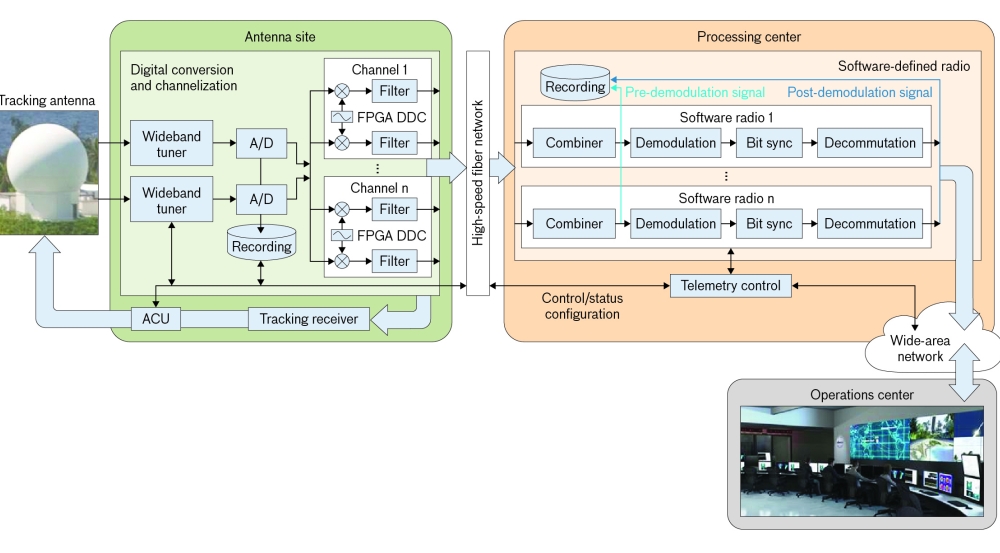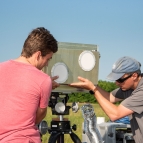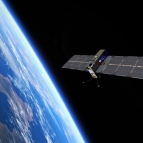Telemetry Modernization with Open-Architecture Software-Defined Radio Technology

Telemetry—the automated measurement and transmission of data from remote sources to receiving stations—plays a vital role in collecting critical information from flight vehicles and space assets. A telemetry system installed on a flight vehicle, for example, could transmit the vehicle’s air speed and GPS location to a flight termination system. Flight test engineers may also be interested in data such as the voltages, temperatures, and barometric or fuel pressures of onboard systems. Data are measured via onboard sensors, modulated onto an RF carrier, and transmitted (or telemetered) to a ground station. At the ground station, the telemetered information is received by a tracking antenna, demodulated, and reassembled into engineering data to provide real-time situational awareness of the flight vehicle and to be used in post-flight data analysis (e.g., of flight vehicle performance).
As part of the effort to upgrade the sensor suite at the U.S. Army Reagan Test Site (RTS), we modernized the test range’s telemetry systems with a software-defined, radio-based open system architecture. This architecture uses software modules running on general-purpose computers. These modules, which perform signal and data processing, can effectively replace current RTS hardware-based receivers that have limited frequency agility, bandwidth capacity, and sampling rates. As the market demand for use of the existing telemetry spectrum (e.g., expanding cellular communication frequencies) forces telemetry users to switch to a nontraditional set of frequencies, the software controlling the RTS telemetry systems’ receiving and processing equipment can be modified to support operation within the new frequency range, eliminating the need to replace expensive hardware. New algorithms can be easily introduced into the processing chain as advanced modulation standards and other capabilities are employed to make efficient use of the limited frequency bands. Software can also be modified to support increased bandwidth or changes to signal-modulation and data-compression techniques.
The U.S. Army, RTS, and Lincoln Laboratory are leading the development and widespread deployment of software radio-based telemetry stations, receivers, and processing capabilities. Software radio technology could also be used in other sensor systems, such as multistatic radar systems, making these systems more adaptable to evolving mission needs and cost effective to sustain and enhance over their life cycles.



